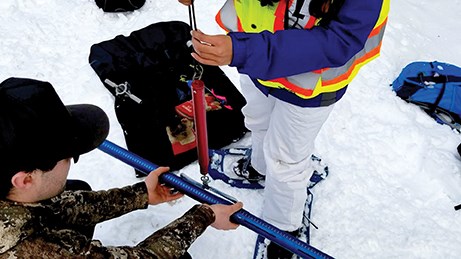The snowpack on the Sunshine Coast is slightly above average this year, thanks to some colder-than-normal weather.
The average snow-water equivalent at Chapman Lake is 140 centimetres, and the latest reading showed an equivalent of 168 cm. At Edwards Lake, the average is 99 cm, and this year’s April reading is reported at 115 cm.
In a verbal report to Sunshine Coast Regional District (SCRD) directors at a committee meeting on April 8, general manager of infrastructure services Remko Rosenboom said this year’s snowpack is similar to that of 2017 and 2018, and much more than 2019’s snowpack. Last year, the annual on-site collection of snowpack data could not proceed as usual because of the pandemic, so April data from 2020 is absent from the SCRD’s water reports.
Rosenboom said he was pleased with the results, but noted that in both 2017 and 2018 the SCRD still had to implement Stage 4 of the drought response plan, and 2019 and 2020 were at Stage 3.
“The fact that our snow levels are as they are currently, while it’s a good-news story, it does not mean that we could not get into water shortage situations later in the summer,” he told the committee.
Cool, dry weather
The cool, dry weather has been good in terms of the beginning of the snowmelt, Rosenboom added. The forecast until June remains colder than normal, although it’s the precipitation from June onwards that will drive the actual summer water supply, he said in his verbal report.
“I don’t expect that we have to go to higher stages in early summer, which is good.”
Stage 1 of the drought response plan comes into effect on May 1 as the default. There are no changes to the drought response plan compared to the one in place in 2020.



